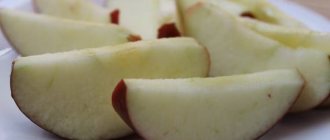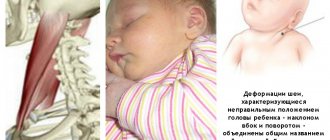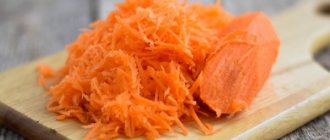What is the correct technique for performing a massage on a 5 month old baby? Why is it needed at all? This article will help answer these and some other questions; it will be especially relevant for young parents.
You need to be careful with your baby, as sudden movements can damage his skin, fragile bones, or even internal organs. Therefore, you should massage as gently and carefully as possible.
The massage may include light clapping on the baby's feet, warming up the whole body, stroking and rubbing. It is important to warm up your muscles well.
Complex massage for a 5-month-old child has the following algorithm:
- Choose a hard surface.
- Place the child in a comfortable position. It is advisable for him to lie in the fetal position. To do this, we press his arms and legs to his body, and direct his head forward.
- We begin to massage the upper limbs first, stroking and rubbing the skin on the hands.
- We bend and straighten our arms.
- Relax the neck muscles. We help the child turn his head in different directions.
- We show how to sit down correctly so that the child learns to maintain balance with the help of his own hands. We perform this action several times.
- We move on to stroking and rubbing the legs. We start with the feet and end the massage by warming up the thigh muscles.
- We teach the child to use the entire foot when walking, and not just the toes. To do this, we simulate riding a bicycle.
- We turn the child smoothly onto his stomach.
- We massage your back. We carry out actions from the bottom up.
- Let's return to the legs. Knead and rub the surface of the skin again.
- We show you how to crawl correctly. To do this, we place a bright toy at a short distance from him, and move his arms from one point to another, and do the same with his legs.
- Let's move on to the abdominal massage again. Movements should be made clockwise.
Important tips
Massage should be done 2 times a day, but in no case 30-60 minutes before bedtime. The child should not be overtired.
To form a healthy foot, it is better to buy shoes only with orthopedic insoles. This will prevent the development of flat feet
Massage sequence
- We perform the “fetal position”, putting the legs and arms together with one hand, with the other we tilt our head forward a little and rock the child a little.
- We massage the hands: with stroking, spiral rubbing from the palms to the forearm. Knead deeply and cross your arms over your chest several times.
- We stroke the child's head and neck muscles, turn the head forward, left and right.
- We help the child sit down: we press the palm of one hand to the surface of the table, and lightly pull it forward with the other. Thus, we teach a five-month-old child to take a sitting position, leaning on his hand. We repeat the exercise 3-4 times for each handle. Next, we give the 5-month-old child the opportunity to grab his thumbs and sit down.
- We massage the legs: with stroking, spiral rubbing from the feet to the thighs, deep kneading, stroking. We imitate walking, bending the foot to the leg to teach you to step on the entire foot, and not on the toes. We perform “bicycle”, “sliding steps” on the table surface.
- We turn onto our stomach.
- We perform a back massage: stroking, spiral rubbing from bottom to top, stroking.
- We massage the legs (back surface): stroking, spiral rubbing, stroking.
- We carry out the reflex movement “hovering” from a position on the stomach.
- We teach the baby to crawl: we place a toy in front of the baby, move his hands along the surface and pull one arm towards the toy. We rearrange the baby's legs on the knees.
- We massage the abdomen by stroking clockwise from the periphery to the center and vice versa, using spiral rubbing along the oblique abdominal muscles.
- We teach a five-month-old child to walk. We hold the baby in front of the table, place one leg on the surface of the table and press it against its surface. He will put the other leg on the table himself. Swap the legs. While the child is trying to walk, we hold the baby and press his foot to the table. During the second step, we release the foot of the first leg and press the second foot.
Children at five months are massaged in the morning and evening, but not just before bedtime. Do not use jumpers or walkers for a child who cannot walk. When walking independently, order orthopedic shoes for your baby to prevent flat feet.
Hand massage for a 5 month old baby
How to massage your face
Stroking is performed on the forehead from the center line to the temples, on the cheeks from the nose to the tragus of the ears, from the corners of the lips and the center of the beard to the earlobes. Continue with light vibrating kneading of the cheeks, since in children of 5 months they experience greater stress. Kneading massage is carried out with circular movements of the index and middle fingers, pressing lightly.
- Sitting exercise. Lying on your back, stretch your arms along your body. The assistant presses the palm of his right hand to the surface of the table. The masseur holds you by your straight legs and with your other hand lifts you by the back, forcing you to sit with support on your right arm, bent at the elbow. The body tilts slightly forward. Then press the palm of the left hand and repeat the exercise.
- Sitting exercise with a stick. The child lies on his back. He is allowed to grab a stick with a diameter of 2-3 cm and holds it with his fists. The assistant fixes the straight legs and watches the head to prevent a blow to the back of the head. They force you to lift your back from the table and sit down.
- Stick squat exercise. The stick is placed under the diaper. The baby's legs are placed on a stick in the middle of the sole, spreading them shoulder-width apart. They hold a five-month-old baby under the muscles and do not allow the feet to move.
- Exercise with bends on a stick. The feet of 5-month-old children are fixed as described above. With your left hand you need to hold the straight legs in front, and with your right hand you need to fix your chest and tummy, tilting your torso forward.
Back massage technique
The child is positioned with his legs towards the massage therapist. Stroking is performed with the back of the fingers, directing movements from the buttocks to the cervical vertebrae along the spine. Next, the brushes make a semicircle and the palmar surface of the fingers performs a massage, stroking from top to bottom. If the baby spins, then hold his legs and perform a massage with one hand.
Using circular translational movements with the fingertips, the back muscles are rubbed and kneaded, pressing moderately and directing the movements from the sacrum to the neck.
Technique for performing buttock massage
Massage of the buttocks is performed by circular rubbing with the pads of slightly bent fingers, directing movements from the center to the periphery. Next, they tap the buttocks with their fingers, changing hands.
All massage movements must be repeated 5-10 times. During the massage procedure, you need to communicate with the child, read poems and sing songs to create a favorable atmosphere.
Game like gymnastics
Since it is in a playful form that children perceive any information better, you need to do gymnastics with them while playing. To do this, you can come up with your own activities or use proven methods. For example, you can play a pilot. Flying on your stomach helps not only train the muscles of the back and abdomen, but also the vestibular system. Place your baby in your palms, tummy down, holding his ribs with your thumbs. Raise your baby so that his legs touch your body. Now walk with him a little, allowing his body to bend slightly.
In order for a child at five months of age to continue to develop properly, he needs not only gymnastic exercises and massage, but also constant communication with his mother. Therefore, any classes should be conducted with constant commentary on what you are doing.
https://youtu.be/yYAyeUa97Dg
Recommendations for massage
Children love to be stroked, caressed, and gently massaged. When massaging a child, be attentive to his reactions and learn how to massage correctly:
- Prepare for it - relax and calm down. Remember that your goal is not to play, but to relax.
- Choose a time that is convenient for you and your baby, he should be alert and fed.
- Give time only to him - don’t talk on the phone, turn off the TV.
- You can turn on soft, relaxing music, close the curtains, and light a lamp in the evening.
- Use olives or extra virgin olive oil, sunflower oil with sweet almonds or grape seed. Rubbing with oil softens friction and helps your hands move smoothly.
- Massage calmly, without expecting anything, be careful and watch the reaction.
- It is better to massage a 3-4 month old baby on a changing table (everything is at hand there).
- If touching clearly irritates your baby, stop.
- Do not massage your head and spine.
By 6 months, the baby has developed conditioned reflexes and reacts to sounds and actively crawls. Massaging mothers of a 6-month-old child and conducting physical education classes are important preventive measures.
Massage helps a 6-month-old baby grow, properly develop the musculoskeletal system, and strengthens the immune system.
During this period, use rhythmic, quick and light pinching and tapping. Before giving a massage to a 6-month-old baby, pet him, talk to him, and play soothing music. Massage your torso more energetically and variedly, using the same techniques: rubbing, vibration, stroking and tapping, etc.
Parents massaging children
Shantala massage
Shantala massage is very popular in the USA, Canada and the Netherlands. It promotes the development of motor skills and has a positive effect on the person being massaged, as well as the person performing the massage. The technique and rules of massage are relatively simple: it is based on gentle stroking and is recommended for almost all babies 4 months and older.
The benefits of massage are relaxing, calming, gives the child a lot of joy, helps parents create a close and strong connection and relationship with the child, improves parents' confidence in their child care skills, relieves or prevents postpartum depression in mothers, helps to understand the child.
How long should you massage your baby?
Massage time is usually limited to 15-20 minutes, each element or technique is repeated 3-9 times. There is no need to carry out a full massage every time; you can limit yourself to a few elements.
Procedures at home can be carried out from the first days of life, they are safe, but it is best, according to the famous master of Shantala massage, Anna M. Bushkevich, to use it from 3 to 4 months, when the baby adapts to the new environment.
From the first month of life, you can massage for 5 to 10 minutes.
It is better to choose frequent and short sessions than long and irregular ones. After breastfeeding, massage is carried out no earlier than 30 minutes, after artificial feeding - 1 hour.
The temperature in the room where the procedures are to be carried out must be at least 22`C. The children's room should be sunny, with soft lighting. The child's age is not limited.
Why get a massage at this age?
Baby's skin is the largest receptor in the body, the external representation of the nervous system. Massage is especially useful for restless, tearful children suffering from intestinal colic. It affects intestinal motility, accelerating digestion and the release of gases. Increased release of endorphins reduces pain and improves well-being. Regular, sensitive touch can even replace toys or other developmental stimulants. Through massage, an emotional connection is created with the parent.
When to start massage: Doctors advise starting massage based on stroking immediately after returning from the hospital. At 2-3 months of life, you can add kneading of the baby’s legs, arms, and back. At 4 months, the baby should receive a full massage. If you carry out this procedure daily before bathing for 15-20 minutes, the child will always have a good appetite, excellent mood and sound sleep.
Basic impact techniques
When massaging infants, completely different techniques are used that differ from massage for adults.
Stroking
The reception calms the baby and relieves muscle tension, improves blood circulation and prepares the skin for the procedure. With an open palm, gentle and smooth movements stroke the body in the direction of lymph flow to the lymph nodes.
Trituration
Rubbing during massage warms up the muscles, reduces tone, nourishes the muscles, and calms the nervous system. Apply the entire palm or three fingers a little more intensely than when stroking.
Kneading
Has a stronger effect than rubbing. Swipe with the ring, index and middle fingers, making circular movements. Kneading relieves swelling, increases blood movement, stimulates lymph flow, and has a beneficial effect on the respiratory system.
Vibrations
Anesthetizes, relieves spasms, tones, improves metabolism. The massage is carried out with an open palm, the movements are fast and intense.
How often to massage your baby
The massage should cover the entire body, starting with the chest and arms. On average, a parent spends about 30 minutes on a massage for a 3-month-old child, but since children are impatient, doctors advise first massaging for 10 minutes, gradually increasing the time.
It is optimal to massage twice a day, in the morning and in the evening, when the child relaxes. Before bed, after bowel movements or immediately after bathing.
Beneficial properties of massage:
- helps regulate sleep;
- improves digestion;
- calms and relaxes;
- increases awareness of your body, its boundaries, increases a sense of security;
- improves and strengthens communication with parents;
- increases the body's resistance;
- stimulates the endocrine system.
At this time, no one should disturb or distract you. Touching a baby in the first months of life is the strongest form of expression of feelings, a form of communication between parents and the baby.









